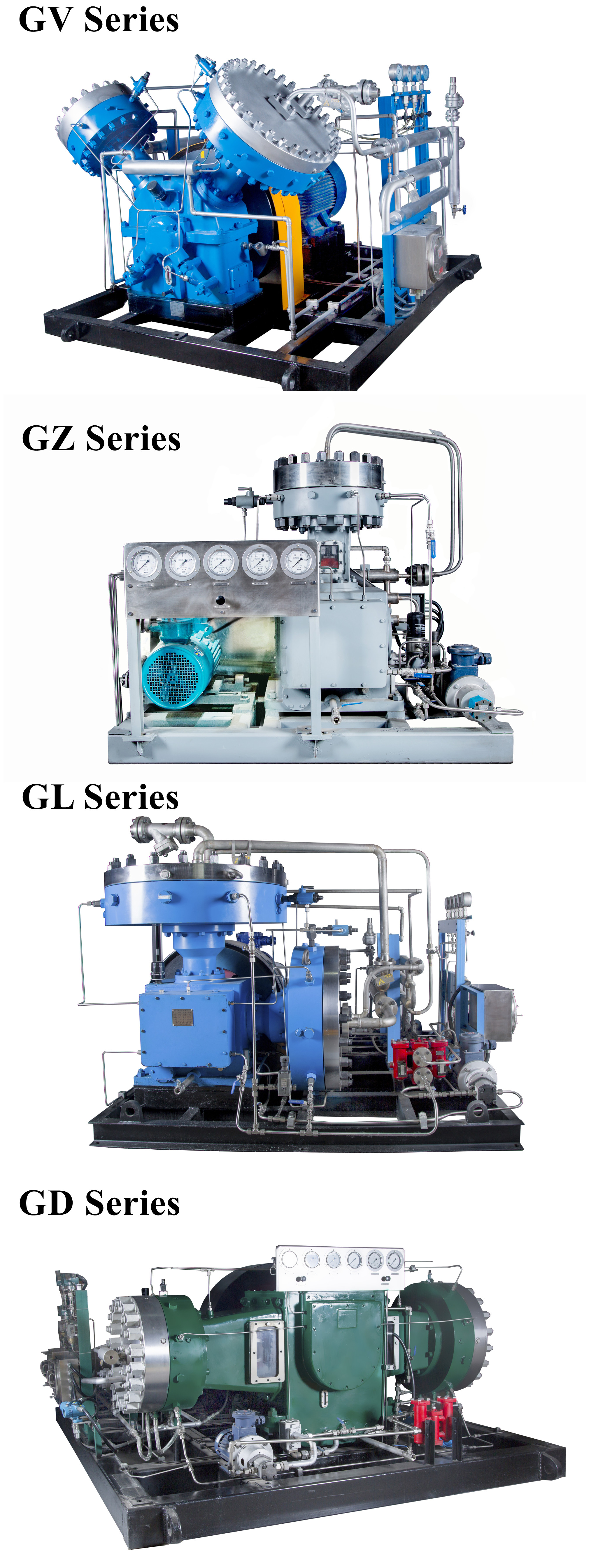The diaphragm compressors are widely used in chemical industry, scientific research tests, food, electronics, and national defense. Users should be proficient in the operation and daily maintenance of the diaphragm compressor.
One . The operation of diaphragm compressor
Start the machine :
1. Check the oil level and intake pressure ,and manually turning gear a week;
2. Open inlet valve, exhaust valve and cooling water valves;
3. Start the motor and turn off the oil valve handle;
4.Check whether the machinery runs normally, whether the oil discharge and exhaust pressure meet the requirements
Shut off the machine:
1. Turn off the motor;
2. Turn off, exhaust valves and cooling water valves;
3.Open the handle of the oil valve.
Adjustment of oil pressure: The oil discharge pressure of the compressor should be greater than about 15%of the exhaust pressure. If the oil pressure is too low or too high, it will affect the exhaust pressure, work efficiency, and the service life of the machine. You should adjust the oil pressure. The specifics are as follows: Dispolas the oil -blocking nut at the tail of the valve, and the adjustment screw is rotated clockwise, and the oil pressure rises; otherwise, the oil pressure decreases.
Note: When adjusting the oil pressure, each rotary adjustment screw should be turned on and the oil storage handle should be turned on and then closed. At this time, the oil pressure displayed by the pressure gauge is more accurate. Repeat this until the oil pressure meets the requirements.
Diaphragm replacement: When the diaphragm is ruptured, the alarm device is started, the compressor is automatically stopped and the sound light is displayed. At this time, it is necessary to check and change the diaphragm. When replacing the diaphragm, clean the air cavity and clean the air with compressed air, and no granular foreign objects are allowed, otherwise it will affect the service life of the diaphragm. When the diaphragm is installed, the sequence of the diaphragm should be assembled correctly, otherwise, it will affect the normal use of the compressor.
Note: After changing the diaphragm, remove the alarm pipeline with a compressed air and clean it, and install it after 24 hours of normal boot. Blow again after one week. In this way, the phenomenon of error alarm can be greatly eliminated. If the alarm occurs within a short period of time after the diaphragm replacement, you should consider whether it is wrong alarm. Repeat the above operations, and pay attention to observe whether the alarm joint has a large amount of oil or gas discharge to determine whether the alarm is mistaken.
Two .Check and exclusion of compressor failure
Oil pipeline failure:
(1) Oil pressure is too low or no oil pressure, but the exhaust pressure is normal
1. The pressure gauge is damaged or the damping device is blocked, and the pressure cannot be displayed normally;
2. The fuel valve is not strictly closed: Tighten the oil storage handle and check whether there are oil discharged by the oil return pipe. If there are oil discharge, replace the oil valve;
3. Check and clean the unidirectional valve under the oil storage valve.
Note: When cleaning the one-way valve, pay attention to the installation order and direction of steel balls, pistons, spring and spring seats.
(2) Excessive oil pressure or no oil pressure and no air pressure
1. Check whether the oil level is too low;
2. Check the compensation oil pump.
1) Remove the bearing end cover and check whether the plug rod is stuck in the boot state.
2) Remove the oil pipe joint and check the compensation oil pump oil discharge status when the power is turned on. Under normal circumstances, there should be sufficient oil and a certain pressure. If no oil is discharged or there is no stress, it is necessary to check and clean up the oil pump in and the oil discharge valve. If there is still no change after the inspection is completed, the plunger and plunger should be considered seriously wear and should be replaced in time.
3) After confirming that the compensation oil pump work is normal, check and clean the oil tank into the oil valve.
4) The pressure regulating valve core and valve seat wear is severely worn or stuck by foreign objects: replace or clean the valve core and valve seat.
5)Check the wear of the piston ring and the cylinder sleeve and replace it in time.
Daily maintenance of diaphragm compressor
The air intake of the compressor should be installed not less than 50 mesh filters, and regularly check the cleaning air valve; the new machine must replace the hydraulic oil when using it for two months, and clean the fuel tank and the cylinder body; Whether to loosen; keep the equipment clean and beautiful.
In short, as a relatively precise mechanical equipment, in addition to being familiar with its normal operation, maintenance, and maintenance, it is also well known to its special functions and functions to prevent rare and toxic gas leakage. Cause production safety accidents and personal safety accidents.
Post time: Nov-04-2022


